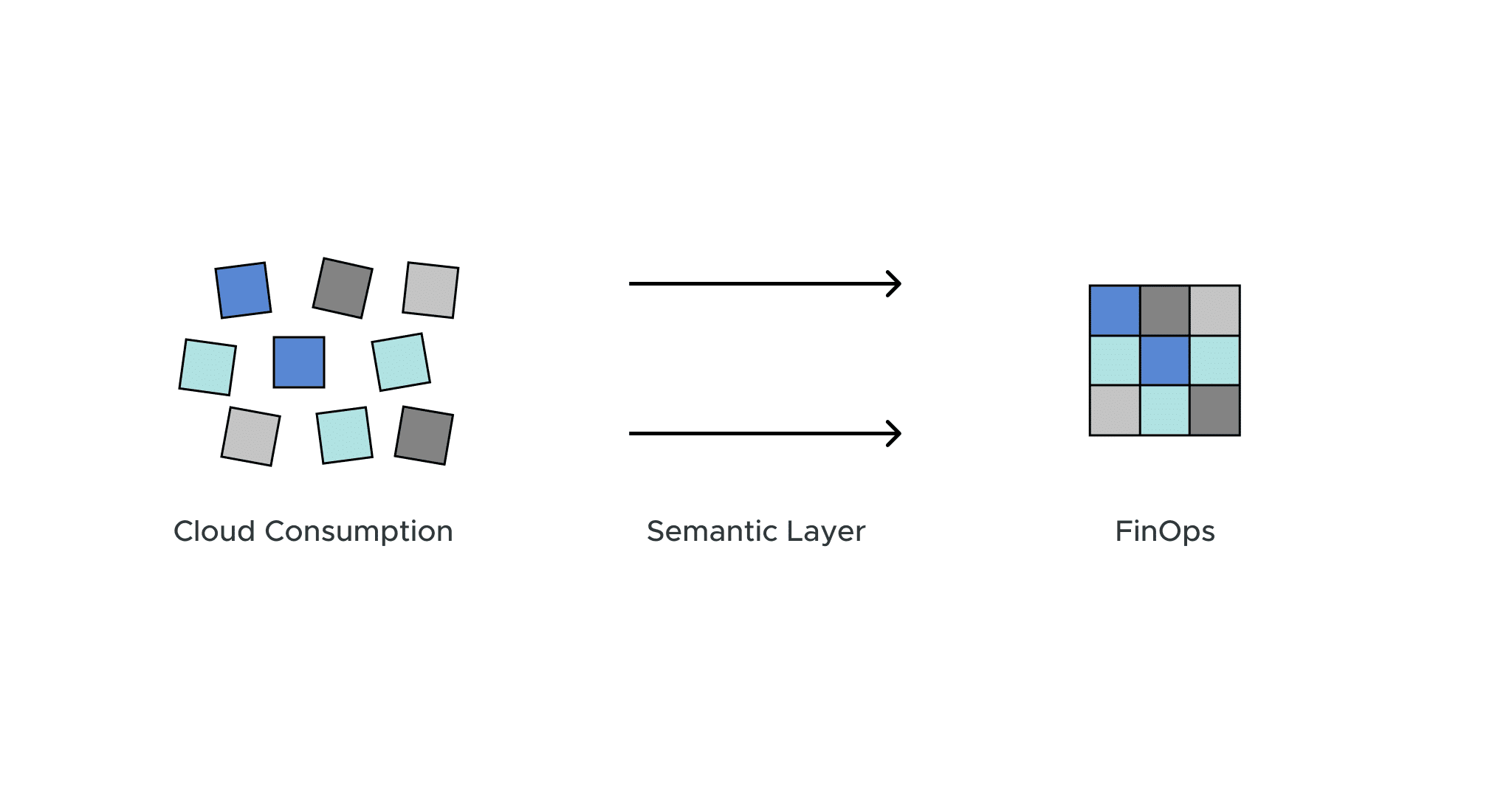June 21, 2022
Rethinking Feature Stores to Better Align AI/ML to Business Impact
In the world of Finance Operations, or FinOps, the focus is on striking a balance between cost efficiency and fostering speed and innovation. FinOps refers to a financial management practice involving cross-functional teams to manage cloud consumption and costs. This practice is emerging due to the ongoing trend of all services and data gravity shifting to the cloud. Given that cloud consumption is becoming increasingly decentralized, it’s challenging to maintain central management and monitoring to provide better predictability.
To achieve this balance and manage this shift, organizations must harness data in ways that lead to clear, actionable insights. As the volume of data increases exponentially, the Semantic Layer emerges as a fundamental tool to help organizations make sense of it all and translate these insights into effective strategies.
The Semantic Layer, acting as a universal translator for your data, abstracts complex data models into simpler terms that are more accessible to everyone within an organization. But its value extends beyond simplification. As data consumption and analytics grow more complex and decentralized, a universal Semantic Layer becomes the gateway for all analytics and insights. This means that the Semantic Layer can help organizations gain true visibility on all analytics and ML/AI cloud consumption.
Furthermore, the Semantic Layer is the only platform that can effectively tie analytics consumption visibility to cloud consumption relevant to BI and analytics workloads. It stands as a natural hub that links the business value of analytics to cloud consumption. This connection can dramatically improve an organization’s ability to manage BI and ML relevant cloud cost, making the Semantic Layer an invaluable tool in the world of FinOps.
By breaking down complex data models into understandable terms, a Semantic Layer creates a lingua franca of data within an organization. This common language allows various teams—technical, business, finance—to collaborate effectively, breaking down silos and fostering an environment conducive to informed decision-making.
The Semantic Layer also addresses the common challenge of semantic sprawl. For example, definitions of what constitutes ‘active users’ may vary across marketing, finance, and product teams. A semantic layer also enables a universal access to these governed set of metrics, enabling the business users to consume analytics with the BI tool of their choice. All of this uniformity ensures that everyone is interpreting the same metric in the same way, making it an essential tool in the FinOps toolkit.
Moreover, a Semantic Layer is instrumental in data governance—an essential aspect of FinOps. By establishing and enforcing policies around data access and ownership, the Semantic Layer mitigates the risk of data breaches and promotes data accuracy. This contributes to solid risk management, an integral aspect of FinOps, ensuring that decisions are based on precise, high-quality data.
In a rapidly evolving business environment, FinOps must keep pace with the ever-increasing complexity and speed of decision-making. A Semantic Layer helps by translating raw, often complex data into digestible, actionable insights for all. It standardizes definitions, enforces data governance, democratizes data access, and facilitates the integration of various business intelligence tools.
At AtScale, we are at the forefront of this transformation, offering a universal Semantic Layer that seamlessly integrates into your modern data stack. The power of the Semantic Layer in bolstering FinOps is transformative, and we are committed to helping organizations unlock this potential.
To delve deeper into the role of the Semantic Layer in your organization’s data stack strategy, don’t miss our blog post, Choosing the Right Semantic Layer Strategy for Your Organization’s Data Stack. Learn how to navigate the myriad options available and select the one that best fits your organization’s unique needs. Remember, the journey to effective FinOps is one of strategic planning, collaboration, and leveraging the right tools—begin your journey today.
ANALYST REPORT